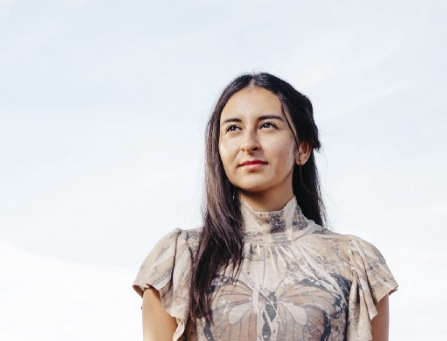The Making of a Mexican-American Dream

*There are two pieces that I believe you should read today. I’ll be posting both of them and I’ll start with this one. It’s a 30 minute read, but it’s well worth the investment, thanks to Taquista Juan Cruz for the link. Suffice it to say that being Mexican-American today is not what is was 30 or even 5 years ago. So much of it is what NewsTaco is about. Stick with it, it’s a valuable read. VL
By Sarah Menkedick, Pacific Standard (30 minute read) 
I met Vianney Bernabé in the buffet line at the Fiesta Inn during the Fulbright orientation in Mexico City. I was struggling to contain my toddler, who was a hydra-like mess of limbs fighting to race freely up and down the corridor. “She’s beautiful,” Vianney said, and we started chatting. Vianney’s English is quintessential California: lots of “likes” and drawn out “yeahs” and “killed its,” with big vowels and sentences that curl at their ends into question-like realizations. She is petite, with a tensile, restless energy. Her wavy black hair is often corralled in a low ponytail, and her features are chiseled: fine cheekbones, fine collarbones, delicately contoured fingers. They are the features of a violinist, which she has been since she was eight years old.
[pullquote]The goal isn’t for Mexican culture to be a colorful sequence of parades and piñatas adorning the stolid, white, Protestant, Anglo mainstream, but rather to be a reservoir of deeper meaning for immigrants, offering them a foothold of purpose, history, and connection as they interact with often hostile and predominantly white institutions.[/pullquote]
As we inched closer to the tubs of chilaquiles, she began telling me her story, and a familiar space opened between us: a territory de aquí y allá, a shared experience of having family on both sides of the border. We started talking by phone every Monday night, after she’d finished her 12-hour day of commuting and work at a security firm as part of the Fulbright Binational Business Program. Her family here in Mexico, she explained, thought of her as American: a deserter of her home country, wealthy and privileged, a gringa come to strut around with all the gringa’s carefree assumptions of power. Meanwhile, in the United States, Vianney’s parents clung to the lowest rungs of a racialized U.S. labor and power hierarchy, having worked for three decades to give their children better lives. She and her sisters had grown up in some of the most marginalized neighborhoods in Los Angeles, struggling against failing schools, crime, racism, and poverty.
Read more stories about Mexican-American culture in NewsTaco. >>
Vianney had come to Mexico City expecting to embrace her past and to be embraced as a long-lost daughter. Instead, like many second-generation Mexican Americans who return to Mexico, she wound up being confronted with her Americanness. “I have never had turkey at Thanksgiving. I grew up listening to cumbia, but on the other hand my education was from the United States,” she told me. Our conversations were full of this vexed ping-ponging between Mexicanness, Americanness, and Mexican Americanness, an ineffable cultural zone inhabited by more and more Americans, including my own Mexican-American husband and daughter.
For Vianney and the other seven million second-generation Hispanics in the U.S., most of them Mexican Americans, this quest to define identity and establish belonging has significant ramifications. As a Pew Research Center demographic survey put it, “The kinds of adults these young Latinos become will help shape the kind of society America becomes in the 21st century.”
What these young Latinos become will be determined not only by their own struggles and achievements, but also by the willingness of many Americans to rethink their fundamental conceptions of Americanness, to recognize the dangerous fiction of an essential, unchanging America defined solely by white culture.

